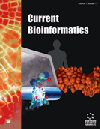
Full text loading...
We use cookies to track usage and preferences.I Understand
Circular RNAs (circRNAs) play important regulatory roles in the progression of gastric cancer (GC), but the exact mechanisms governing their regulation remain incompletely understood. Prior studies typically used back-spliced junctions (BSJs) to represent a range of circRNA isoforms, overlooking the prevalence of alternative splicing (AS) events within circRNAs, which could lead to unreliable or even incorrect conclusions in subsequent analyses, hindering our comprehension of the specific functions of circRNAs in GC.
This study aimed to explore the potential functional roles of the dysregulated circRNA transcripts in GC and provide new biomarkers and effective novel therapeutic strategies for GC treatment.
RNA-seq data with rRNA depletion and RNase R treatment was employed to characterize the expression profiles of circRNAs in GC, and RNA-seq data only with rRNA depletion was employed to identify differentially expressed mRNAs in GC. Based on the full-sequence information and accurate isoform-level quantification of circRNA transcripts calculated by the CircAST tool, we performed a series of bioinformatic analyses. A circRNA-miRNA-hub gene regulatory network was constructed to reveal the circRNA-mediated regulation of competing endogenous RNAs in GC, and then the protein-protein interaction (PPI) network was built to identify hub genes.
A total of 18,398 circular transcripts were successfully reconstructed in the samples. Herein, 351 upregulated and 177 downregulated circRNA transcripts were identified. Functional enrichment analysis revealed that their parental genes were strongly associated with GC. After several screening steps, 19 dysregulated circRNA transcripts, 40 related miRNAs, and 65 target genes (mRNAs) were selected to construct the ceRNA network. Through PPI analysis, five hub genes (COL5A2, PDGFRB, SPARC, COL1A2, and COL4A1) were excavated. All these hub genes may play vital roles in gastric cancer cell proliferation and invasion.
Our study revealed a comprehensive profile of full-length circRNA transcripts in GC, which could provide potential prognostic biomarkers and targets for GC treatment. The results would be helpful for further studies on the biological roles of circRNAs in GC and offer new mechanistic insights into the pathogenesis of GC.

Article metrics loading...

Full text loading...
References


Data & Media loading...
Supplements

